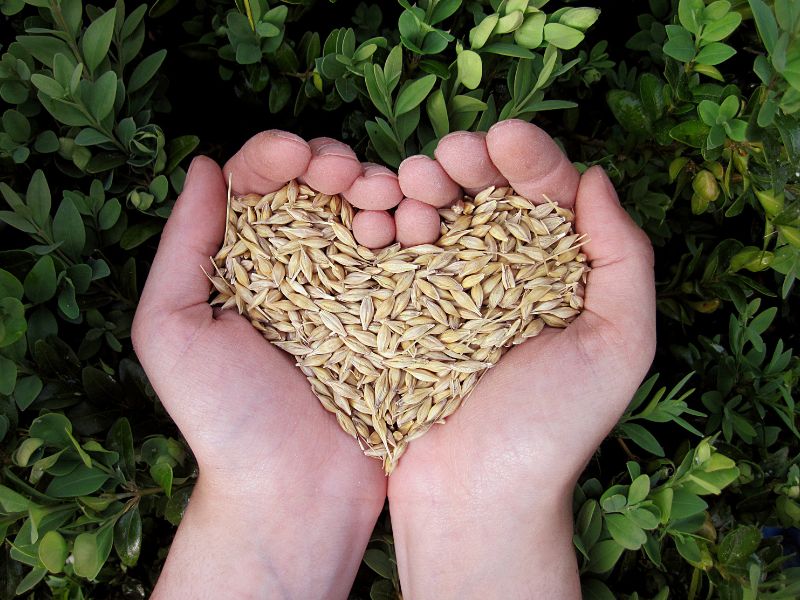If you’ve ever stood in the bread aisle wondering what makes something “whole grain”, you’re not alone. With so many options and conflicting information out there, it’s easy to feel confused about which carbs deserve a spot on your plate. Do you need to eat whole grains? Are there half grains, or part grains? Where do they store the missing grains??
Understanding whole grains doesn’t have to be complicated, and making the switch can have some pretty impressive benefits for your overall health. Swapping to whole grains can improve heart health, support digestion, and even help manage blood sugar levels. Whether you’re aiming for better general health or managing diabetes, understanding whole grains is an easy way to make better food choices every day.
What Exactly Are Whole Grains?
A grain kernel is like a tiny package with three important parts: the bran (the outer protective layer), the germ (the nutrient-rich core), and the endosperm (the starchy middle). Whole grains keep all three parts intact. Refined grains, like white flour or white rice, strip away the bran and germ to leave mostly starch behind.
It’s kind of like comparing a fresh orange to orange juice: you get more fiber, vitamins, and minerals when you keep everything together.
Why Are Whole Grains Good for You?
Whole grains are a nutrition powerhouse! Compared to refined grains, they’re much higher in fiber, vitamins and minerals, and natural antioxidants. By keeping the kernel intact, whole grains deliver a wealth of healthy nutrients that boost energy, support your immune system, and keep you feeling full.
What Foods Count as Whole Grains?
Next time you’re grocery shopping, check the labels! Look for “whole” as the first ingredient (like “whole wheat flour” or “whole grain oats”). Words like “multigrain” or “wheat” alone don’t guarantee it’s a whole grain.
Here are some common whole grain options:
- Brown rice
- Quinoa (technically a seed, but acts like a grain)
- Oats and oatmeal
- Whole wheat bread and pasta
- Barley
- Bulgur wheat
- Wild rice
- Buckwheat
- Whole grain cereals
What Are Some Smart Swaps for Whole Grains?
You don’t have to overhaul your diet overnight! Even swapping one refined grain serving a day for a whole grain can make a difference over time. Here are some easy substitutions for smarter flavor:
- White bread → 100% whole grain bread
- White rice → brown rice or quinoa
- Regular pasta → whole wheat or chickpea pasta
- Sugary cereal → old-fashioned oats with fruit
- Snack crackers → whole grain or seeded crackers
How Do Whole Grains Help with Diabetes Management?
Because they contain more fiber, whole grains are digested more slowly than refined grains. This helps reduce blood sugar spikes and keeps energy levels steady, which are big wins for people with diabetes.
Some research also suggests that a higher whole grain intake is linked to a lower risk of developing type 2 diabetes. For those already managing diabetes, whole grains can be part of a balanced meal plan alongside regular blood glucose monitoring.
At America’s Best Care Plus, we also make managing diabetes easier with convenient diabetic testing supply and continuous glucose monitor (CGM) delivery right to your door.
Whole Grain FAQs
Are oats good for diabetics?
Yes. Oats are a whole grain rich in soluble fiber, which can help slow digestion and reduce post-meal blood sugar spikes. Opt for steel-cut or old-fashioned oats instead of instant varieties for the best benefits.
Is popcorn a whole grain?
Yes! Plain, air-popped popcorn is a whole grain! It’s a low-calorie, high-fiber snack. Just watch out for butter, oil, and added salt if you’re managing blood sugar or heart health.
Which whole grains help lower blood sugar?
Barley, quinoa, oats, bulgur, and brown rice are great options because they’re high in fiber and have a lower glycemic index than refined grains.
How many servings of whole grains should you eat a day?
The Dietary Guidelines for Americans recommend making at least half your grains whole, which comes to about 3–5 servings per day for most adults.

